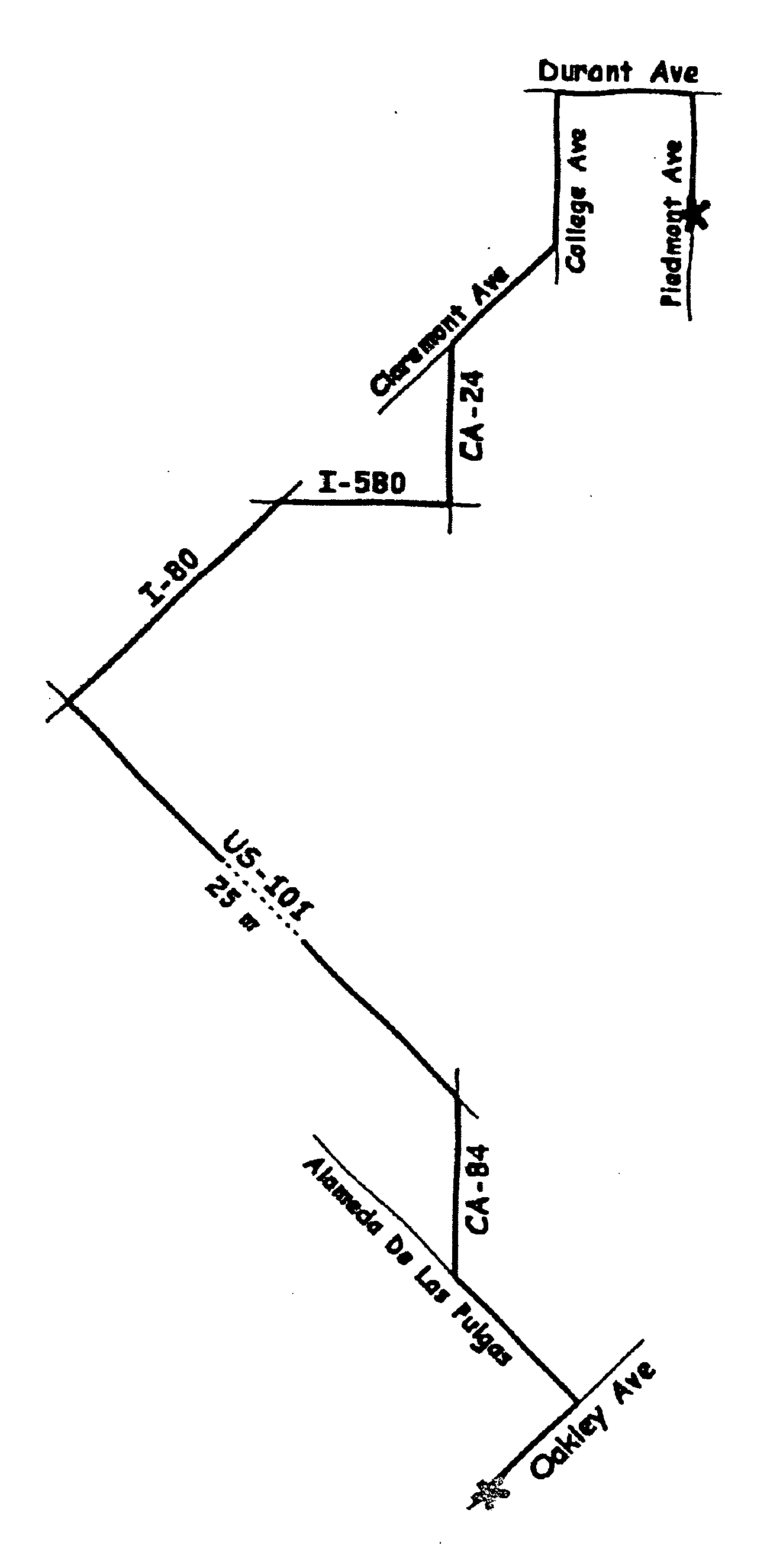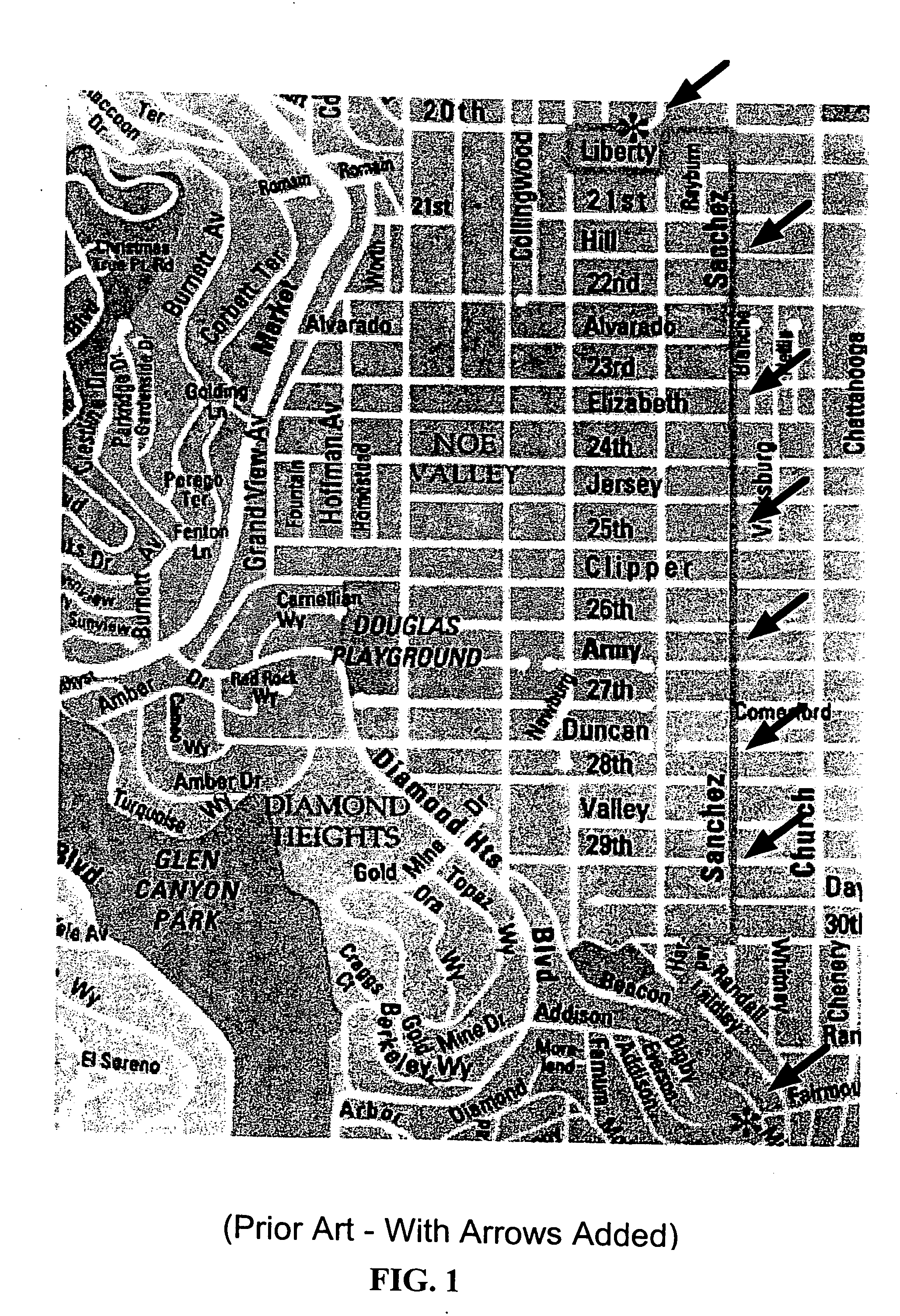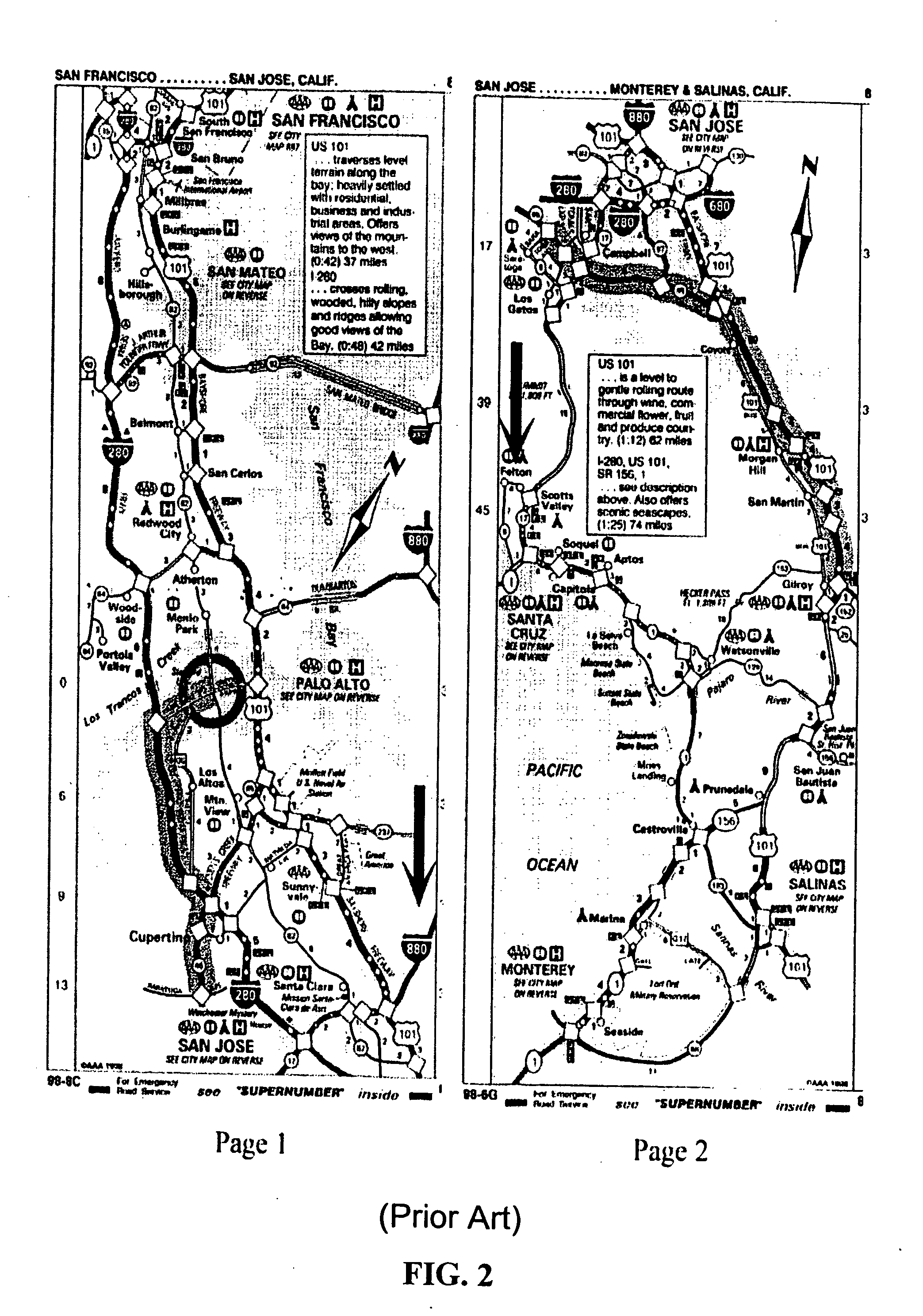System and method for abstracting and visualizing a route map
a route map and system technology, applied in the field of system and method for abstracting and visualizing a route map, can solve the problems of unsatisfactory on-line computer generated maps, inability to effectively communicate points of reorientation, and the need for uniform scaling of roads, so as to avoid map clutter in the scaled map
- Summary
- Abstract
- Description
- Claims
- Application Information
AI Technical Summary
Benefits of technology
Problems solved by technology
Method used
Image
Examples
Embodiment Construction
[0085] The present invention provides a system and method for generating maps that have the benefits and characteristics of a hand-drawn map. Automatically generating route maps in this style is complex. Distorting aspects of the map can accentuate reorientation points, but it can also have detrimental effects such as introducing false intersections. Creating an effective route map generally requires searching a large space of possible map layouts for an optimal layout. An efficient multistage algorithm that couples a road layout refinement module with a label and annotation placement module is disclosed. The resulting map is rendered using subtle perceptual cues, such as a wavy hand-drawn style for drawing the paths, to communicate the distortion of scale and shape.
[0086] The design goals of the present invention are:
[0087] (i) Roads should be variably scaled so that all roads and reorientation points are clearly visible and easily labeled.
[0088] (ii) If road A is longer than ro...
PUM
 Login to View More
Login to View More Abstract
Description
Claims
Application Information
 Login to View More
Login to View More - R&D
- Intellectual Property
- Life Sciences
- Materials
- Tech Scout
- Unparalleled Data Quality
- Higher Quality Content
- 60% Fewer Hallucinations
Browse by: Latest US Patents, China's latest patents, Technical Efficacy Thesaurus, Application Domain, Technology Topic, Popular Technical Reports.
© 2025 PatSnap. All rights reserved.Legal|Privacy policy|Modern Slavery Act Transparency Statement|Sitemap|About US| Contact US: help@patsnap.com



